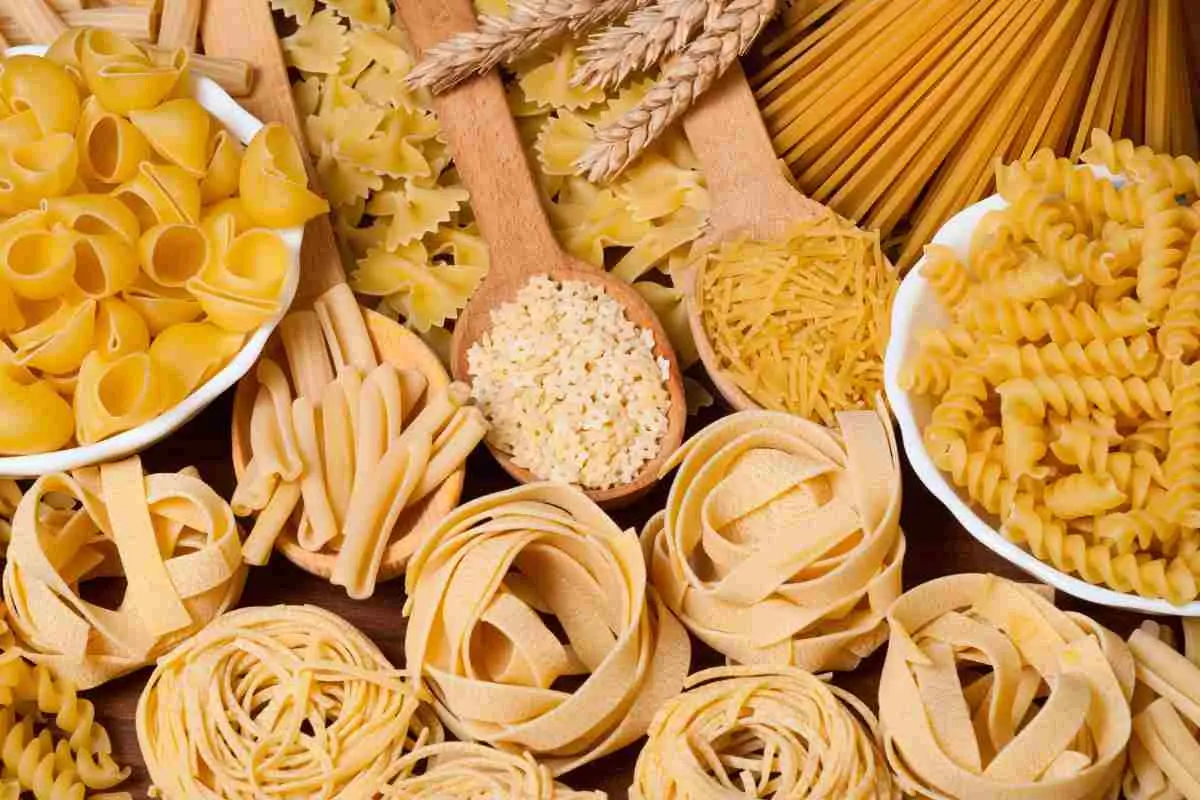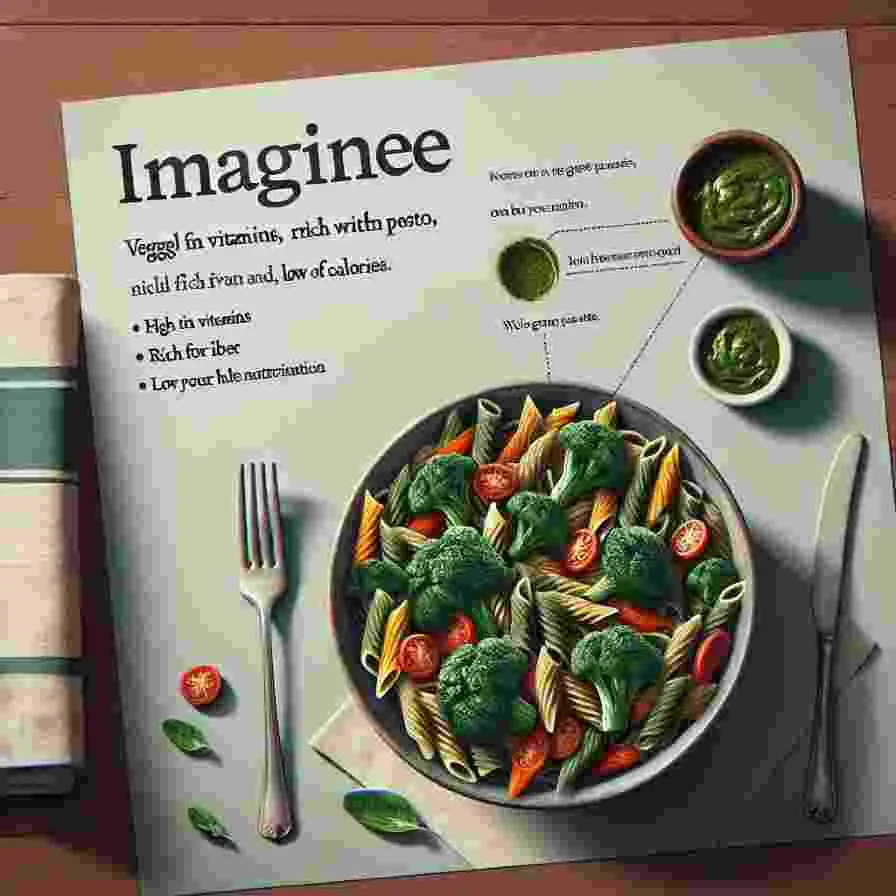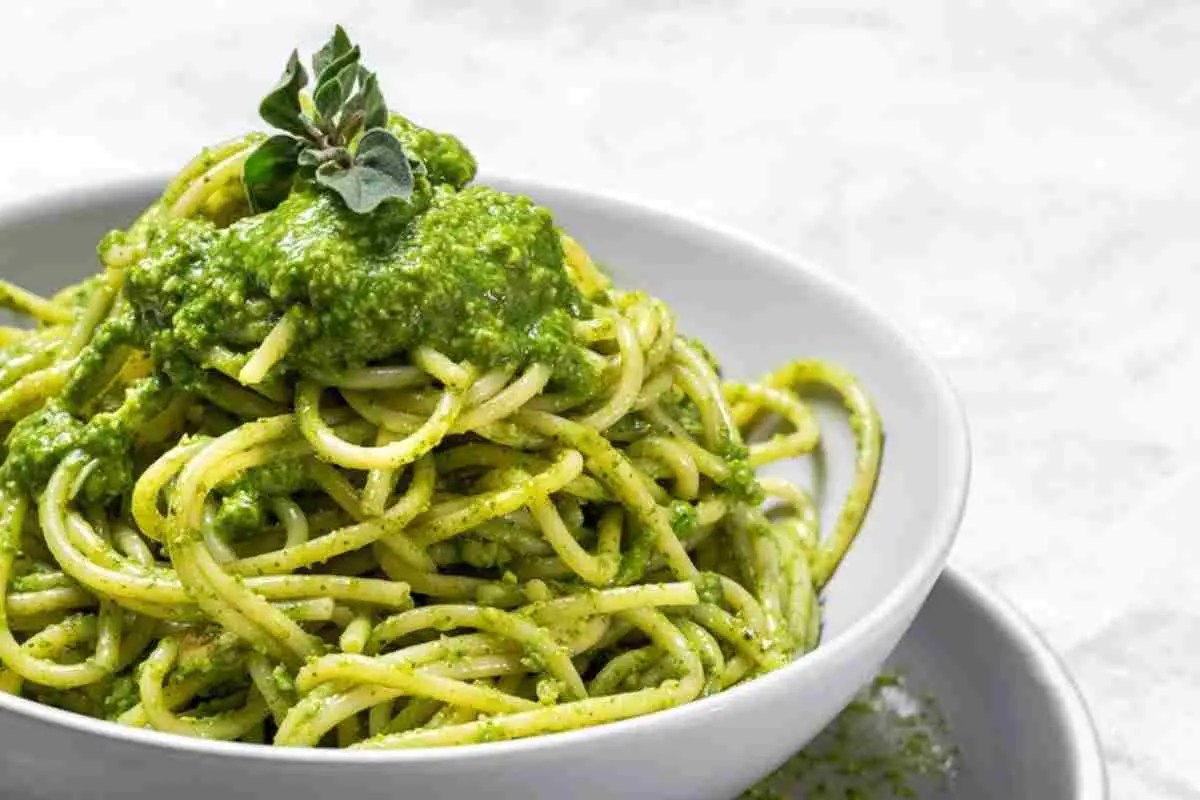Welcome to our delightful and easy-to-follow recipe for veggie pasta with pesto sauce. If you’re looking for a quick and delicious meal that’s bursting with flavor, you’re in the right place. This recipe combines fresh, vibrant vegetables with a vibrant pesto sauce, creating a hearty and wholesome dish that is both satisfying and nutritious. With just a few simple steps, you can enjoy a restaurant-quality meal right in your own kitchen.
In this article, we’ll guide you through the process of creating the perfect veggie pasta with pesto sauce. You’ll learn about the vegetables that complement the pesto sauce, the traditional pasta shapes that pair well with it, and expert tips to elevate your dish to perfection. We’ll also explore the nutritional benefits of this flavorful meal and provide you with serving suggestions and pairings to enhance your dining experience.
Whether you’re a seasoned cook or a beginner in the kitchen, this recipe is designed to be easy and accessible for everyone. So grab your apron and let’s get cooking!
What Vegetables Go Well with Pesto Sauce?
When it comes to pairing vegetables with pesto sauce, there are numerous options that enhance the rich and aromatic flavors of this classic sauce. Here, we’ll explore some vegetables that beautifully complement pesto, adding texture, color, and even additional nutritional benefits to your dish.
1. Tomatoes: The juicy sweetness of tomatoes complements the savory and herbal notes of pesto sauce. Try adding cherry tomatoes or sun-dried tomatoes to your pasta for bursts of flavor.
2. Zucchini: Zucchini’s mild and slightly sweet taste pairs well with pesto sauce. Slice it into thin ribbons or dice it into cubes to add a subtle crunch to your pasta.
3. Broccoli: Broccoli florets not only provide a pleasant crunch but also add a hint of earthiness to the pesto sauce. Blanch or steam the florets before tossing them into your pasta.
4. Bell Peppers: The vibrant colors and sweet flavors of bell peppers provide a delightful contrast to the rich pesto sauce. Slice them thinly or chop them into bite-sized pieces to add a pop of color to your pasta.
5. Spinach: Spinach not only adds a vibrant green color to your pasta but also complements the herbal flavors of pesto sauce. Toss fresh spinach leaves into the pasta during the last few minutes of cooking. They will wilt slightly and blend beautifully with the sauce.
These are just a few examples of vegetables that go well with pesto sauce. Feel free to experiment with your favorite vegetables and discover your own unique combinations. By adding vegetables to your pasta with pesto sauce, you’ll not only enhance the taste but also boost the nutritional value of your meal.
What Pasta Traditionally Goes with Pesto?

When it comes to pairing pasta with pesto sauce, there are certain traditional choices that create a harmonious and flavorful combination. These classic pasta shapes have been enjoyed with pesto for generations, allowing the vibrant flavors of the sauce to shine. Let’s explore the pasta options that perfectly complement the traditional pesto sauce.
1. Linguine
Linguine, a long and flat pasta, is a popular choice to serve with pesto sauce. The flat surface of linguine allows it to capture and hold onto the pesto, ensuring each bite is packed with delicious flavor. The delicate nature of linguine creates a light and refreshing dish that showcases the vibrant green color and aromatic qualities of pesto.
2. Fusilli
Fusilli, with its spiral shape, pairs beautifully with pesto sauce. The twists and turns of fusilli create nooks and crannies that catch and hold onto the pesto, resulting in a dish that is bursting with flavor in every bite. The combination of the pesto’s herbal notes and the unique texture of fusilli makes for an enjoyable and satisfying meal.
3. Farfalle
Farfalle, commonly known as bowtie or butterfly pasta, is another classic choice when it comes to serving pesto sauce. The whimsical shape of farfalle not only adds visual appeal to the dish but also allows the sauce to cling to its ridges and folds. The delicate yet firm texture of farfalle offers a delightful contrast to the rich flavors of pesto, creating a well-balanced and satisfying pasta dish.
- Linguine, fusilli, and farfalle are just a few examples of pasta varieties that traditionally go well with pesto sauce. However, feel free to experiment with other shapes such as penne, spaghetti, or orecchiette to find your own personal favorite combination. The key is to choose a pasta shape that complements the vibrant flavors of pesto and provides a satisfying texture to each bite.
Now that we’ve explored the traditional pasta options that go hand in hand with pesto sauce, you can confidently create a delicious and authentic pesto pasta dish. Whether you choose linguine, fusilli, farfalle, or another pasta variety, the combination of these classic shapes and vibrant pesto sauce is sure to tantalize your taste buds and transport you to the heart of Italian cuisine.
Expert Tips for Perfecting Veggie Pasta with Pesto Sauce
When it comes to creating the perfect veggie pasta with pesto sauce, there are several expert tips and techniques that can take your dish to the next level. Whether you’re a seasoned cook or a beginner in the kitchen, these tips will help you achieve a restaurant-quality meal right at home.
- Cook the pasta al dente: For the best texture and taste, cook your pasta until it is al dente, which means it is firm to the bite. This will prevent it from becoming mushy when combined with the pesto sauce.
- Reserve pasta water: Before draining your cooked pasta, be sure to set aside a small amount of the starchy pasta water. This saved water can be used to adjust the consistency of your pesto sauce later on.
- Blanch your vegetables: To bring out the vibrant colors and retain the crispness of your vegetables, blanch them briefly in boiling water before adding them to the pasta. This step will also enhance their flavors.
- Toss the pasta with sauce: Instead of pouring the pesto sauce directly onto the plated pasta, toss the cooked and drained pasta with the sauce in a separate bowl. This ensures that every strand of pasta is evenly coated in the flavorful pesto.
- Adjust the consistency: If your pesto sauce is too thick, gradually add small amounts of the reserved pasta water to achieve the desired consistency. This will help the sauce coat the pasta evenly and create a smooth texture.
By following these expert tips, you can elevate your veggie pasta with pesto sauce to new heights. These simple yet effective techniques will help you create a perfectly balanced and delicious dish that will impress your family and friends. So, grab your apron and get ready to create a memorable meal in your own kitchen!
Nutritional Benefits of Veggie Pasta with Pesto Sauce

When it comes to enjoying a delicious and healthy meal, veggie pasta with pesto sauce is a winning combination. This flavorful dish not only satisfies your taste buds but also provides numerous nutritional benefits. Let’s take a closer look at why veggie pasta with pesto sauce is a fantastic choice for a wholesome meal.
- Abundance of Vitamins and Minerals: Veggie pasta with pesto sauce is packed with an array of vitamins and minerals. The vibrant vegetables used in this dish, such as cherry tomatoes, zucchini, and bell peppers, are rich in vitamins A and C, potassium, and fiber. These essential nutrients support your overall health and well-being.
- Heart-Healthy Fats: The star ingredient of pesto sauce, basil, contains heart-healthy fats called monounsaturated fats. These fats have been shown to help reduce inflammation and lower the risk of heart disease. Additionally, the olive oil used in making pesto sauce also contributes to its heart-healthy properties.
- Antioxidant Power: Pesto sauce is not only delicious but also a great source of antioxidants. The basil and garlic used in pesto are rich in antioxidants that help protect your cells from damage caused by free radicals. Incorporating veggie pasta with pesto sauce into your diet can help boost your antioxidant intake.
- Versatility and Creativity: One of the best things about veggie pasta with pesto sauce is its versatility. You can customize this dish by adding your favorite vegetables, such as spinach, broccoli, or mushrooms. You can also experiment with different types of pasta to suit your taste. The possibilities for creative and nutritious combinations are endless.
Veggie Pasta with Pesto Sauce Recipe
Are you craving a delicious vegetarian pasta dish? Look no further! This veggie pasta with pesto sauce recipe is packed with flavor and simple to prepare. Let’s dive into the details.
Ingredients:
- Your choice of pasta
- Assorted vegetables (such as cherry tomatoes, zucchini, and bell peppers)
- Fresh basil leaves
- Garlic cloves
- Pine nuts
- Grated Parmesan cheese
- Extra virgin olive oil
- Salt and pepper to taste
Instructions:
- Begin by cooking your pasta according to the instructions on the package. Drain and set it aside.
- While the pasta is cooking, prepare the pesto sauce. In a food processor or blender, combine fresh basil leaves, garlic cloves, pine nuts, grated Parmesan cheese, a pinch of salt, and a drizzle of olive oil. Blend until you achieve a smooth and creamy consistency.
- Next, chop the assorted vegetables into bite-sized pieces.
- In a large pan, heat olive oil over medium heat. Add the chopped vegetables and sauté them until they are tender yet still crisp.
- Add the cooked pasta to the pan with the sautéed vegetables and mix well.
- Pour the pesto sauce over the pasta and vegetables, ensuring it is evenly distributed.
- Toss everything together until the pasta and vegetables are coated in the delicious pesto sauce.
- Season with salt and pepper to taste.
- Serve the veggie pasta with pesto sauce hot and enjoy!
This simple and flavorful dish is perfect for busy weeknight dinners or for impressing guests with a delicious vegetarian pasta option. Give this vegetarian pasta recipe a try and savor every bite of the pesto-infused pasta and perfectly cooked vegetables. It’s a delightful combination that you’ll want to make again and again.
Conclusion
In conclusion, veggie pasta with pesto sauce is a delightful and nutritious option for those seeking a fresh, easy-to-make meal. By combining vibrant vegetables, aromatic pesto sauce, and the perfect pasta, you can enjoy a flavorful dish that satisfies both your taste buds and your desire for a wholesome meal.
Experiment with different vegetables like broccoli, cherry tomatoes, and zucchini to add color and texture to your dish. Remember to choose pasta shapes like fusilli, penne, or farfalle that can hold the delicious pesto sauce and vegetables well.
For serving suggestions, garnish with some fresh basil leaves or grated Parmesan cheese to enhance the flavors. Enjoy this versatile dish as a main course or side dish and pair it with a crisp green salad or a glass of chilled white wine for a complete and satisfying meal.
Whether you’re a seasoned cook or a beginner in the kitchen, veggie pasta with pesto sauce offers endless possibilities for creativity and healthy eating. So, get ready to indulge in this classic dish by customizing it to your liking and experience the delightful combination of flavors that will leave you wanting more.
FAQ
What vegetables go well with pesto sauce?
Various vegetables pair beautifully with pesto sauce, including cherry tomatoes, zucchini, bell peppers, mushrooms, and asparagus. These vegetables complement the vibrant flavors of pesto and add a delightful crunch or tenderness to your pasta dish.
What pasta traditionally goes with pesto?
The traditional pasta choice for pesto sauce is trofie or trenette. Trofie is a short, twisted pasta from Liguria, Italy, where pesto sauce originates. However, other pasta shapes like penne, spaghetti, and fusilli also work well with pesto, allowing you to customize the dish to your preference.
How much pesto should you add to pasta?
The amount of pesto sauce to add to your pasta depends on personal taste and preference. As a general guideline, start with about 1/4 cup of pesto per serving and adjust according to your desired flavor intensity. Remember, pesto is quite flavorful, so a little goes a long way.
What does pesto pair well with?
Pesto pairs splendidly with a variety of ingredients to create a well-balanced meal. You can serve your veggie pasta with pesto alongside garlic bread, a fresh green salad, or grilled vegetables for a complete and satisfying meal. Additionally, you may choose to add grilled chicken, shrimp, or salmon for a protein-rich option.
What are the nutritional benefits of veggie pasta with pesto sauce?
Veggie pasta with pesto sauce is a nutritious choice that provides a range of health benefits. The vegetables offer essential vitamins, minerals, and dietary fiber, while the pesto sauce, made with basil, garlic, pine nuts, and olive oil, provides heart-healthy fats and antioxidants. This dish is a great way to incorporate more vegetables into your diet and enjoy a delicious meal at the same time.
What are some expert tips for perfecting veggie pasta with pesto sauce?
To perfect your veggie pasta with pesto sauce, follow these expert tips: – Use high-quality, fresh ingredients for both the pasta and pesto sauce. – Cook the pasta al dente to maintain a firm texture. – Reserve some pasta water to add to the sauce, as it helps to loosen and bind the flavors. – Toss the cooked pasta with the sauce in a pan over low heat for a minute or two to enhance the flavors and ensure even distribution. – Finally, garnish your dish with freshly grated Parmesan cheese, toasted pine nuts, or a drizzle of extra virgin olive oil for added richness.
What are some serving suggestions and pairings for veggie pasta with pesto sauce?
Besides serving veggie pasta with pesto sauce as a standalone dish, you can also try these serving suggestions and pairings: – Top with fresh basil leaves or a sprinkle of crushed red pepper for added flavor and visual appeal. – Serve with a side of crusty bread for dipping into the pesto sauce. – Accompany with a crisp white wine, such as Sauvignon Blanc or Pinot Grigio, to complement the flavors. – Pair with a light and refreshing salad, such as a Caprese salad or a mixed greens salad with citrus vinaigrette. – Add grilled vegetables or roasted cherry tomatoes for extra depth of flavor and texture.
